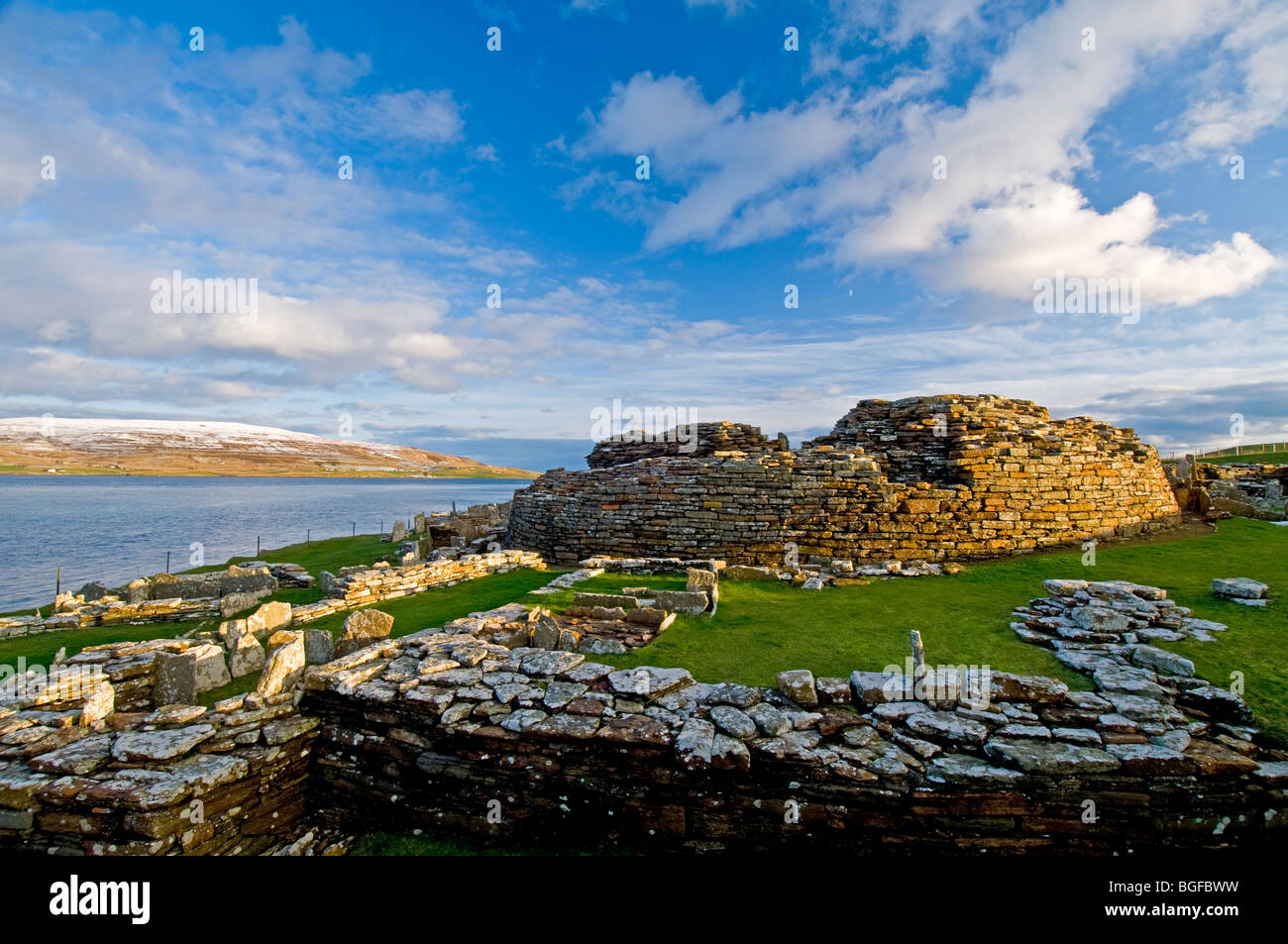The Pictish / Norse site of the Broch o' Gurness on the Knowe o' Aikerness Mainland Orkney Isles Scotland. SCO 5801

Image details
Contributor:
David Gowans / Alamy Stock PhotoImage ID:
BGFBWWFile size:
60 MB (2.7 MB Compressed download)Releases:
Model - no | Property - noDo I need a release?Dimensions:
5620 x 3733 px | 47.6 x 31.6 cm | 18.7 x 12.4 inches | 300dpiDate taken:
23 December 2009Location:
Broch of Gurness Aikerness Mainland Orkney Highlands & Islands.More information:
The Broch of Gurness is an Iron Age broch village on the northwest coast of Mainland Orkney in Scotland overlooking Eynhallow Sound. The remains of the central tower are up to 3.6 metres (11.8 ft) high, and the stone walls are up to 4.1 metres (13.5 ft) thick. The broch probably had a conical or mildly hyperbolic top, and has the remains of a settlement surrounding and adjoining it. Pieces of a Roman amphora dating pre-60 AD were found here, lending weight to the record that a "King of Orkney" submitted to Emperor Claudius at Colchester in 43 AD The sprawl of stone houses filled all the available space between broch and the outer defences, and probably housed a community of up to 40 families. The semi-detached stone-built dwellings were partitioned off into separate living areas, each contained a hearth, stone furniture, and even a recognisable toilet. The broch itself was accessed by an entrance causeway on the eastern side of the settlement. Houses line this causeway giving the appearance of a processional path. As time progressed, the broch's defensive role decreased, until around 100AD, after years of neglect, it was finally abandoned and its upper sections dismantled - probably to provide the building material for later houses in the area. Over the ensuing years, its walls continued to be reduced, as stone provided a valuable source of building material. The structure that remains today is, at its maximum, 3.5 metres tall, with a solid base. The hollow section of the wall, on either side of the main entrance, houses small cells.